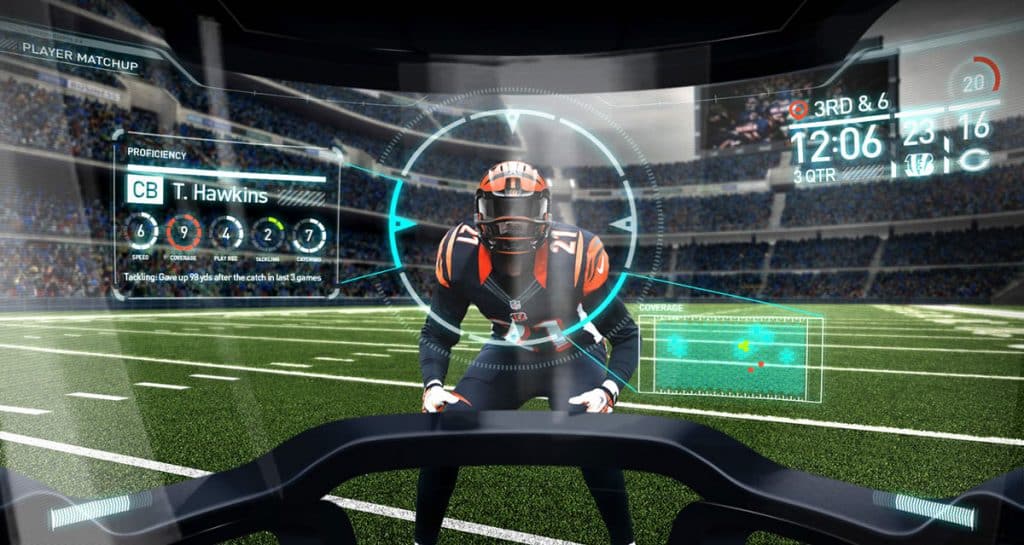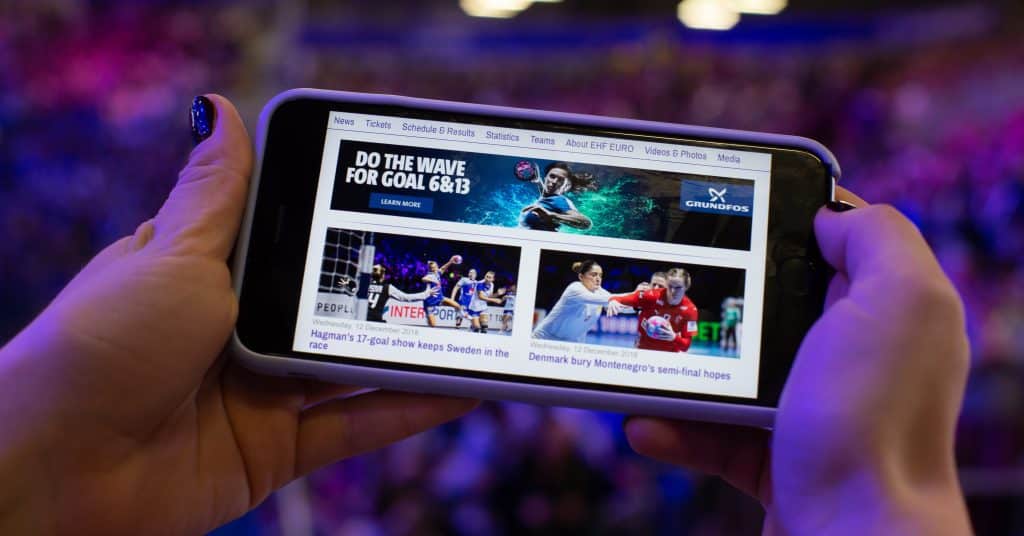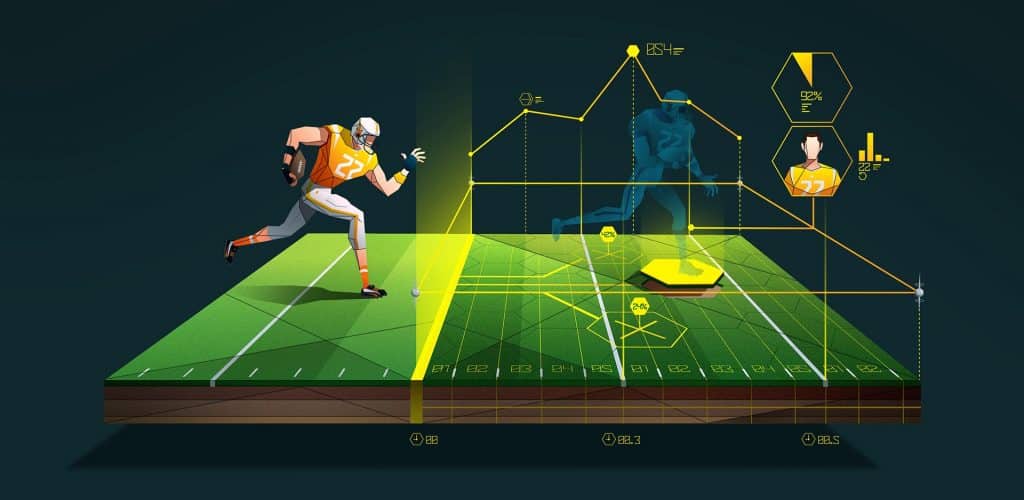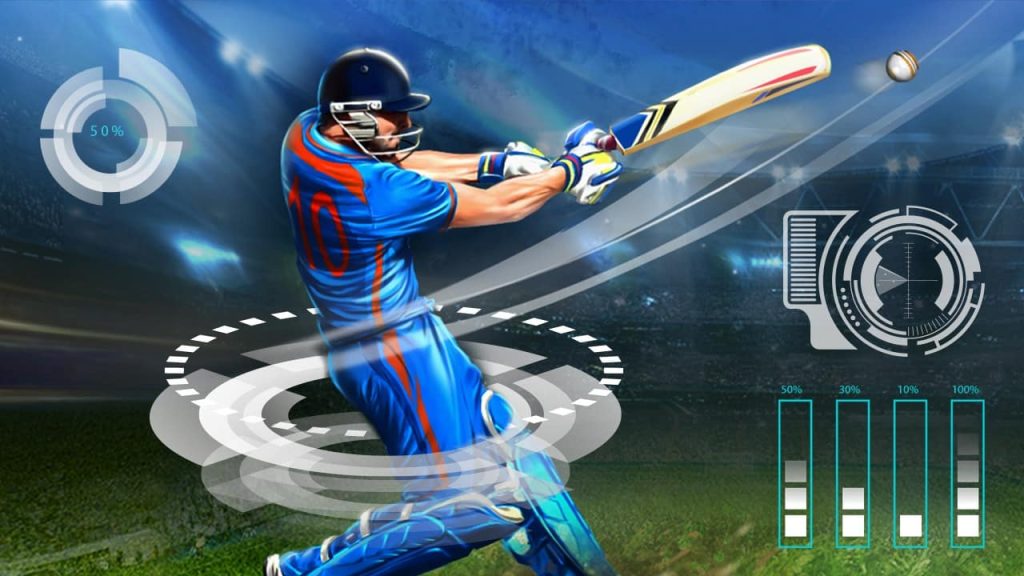Technology in Sports – Introduction :
With technology having made inroads to our lives, it has made everything so very convenient. It would not take a lot to guess that it has given rise to a new field even in the sports industry in the form of sports technology. Any part of our culture that has not been influenced by developments in technology is challenging to find. The use of technology in sports and games was initially met with a mixed response.
How does a machine benefit from something that honours human physical athleticism?
There are significant advantages of using technology in sports. There is a substantial increase in the use of innovations in sports. For example, in football, new sports technology is used for various purposes, such as aiding referees in decision-making and quantifying the players’ success during a game, thereby helping the coach prepare a game plan.
By their very nature, sports are intensely competitive, and in their search to be the best, competitors would strive for some advantage. Fortunately, there’s still much money in athletics because many people are motivated and eager to do what they can to help.
However, it can be murky where the line is for obtaining the edge. Large schemes of doping, covered up by aggressively misleading and ruining others’ careers, such as Lance Armstrong, are evil. On the other side, technology is mainly fine. It has already seen many advantages for several sports and is set to continue to support them in ways previously unthinkable.

Various uses of Technology in Sports :
Training:
It is possible to evaluate the success of an athlete to previously unknown levels. Coaching personnel should monitor a team’s success so that adjustments can be made to specific training programs. It is not a one-size-fits-all solution today. Sports Technology predominantly helps coaches provide their squad with a better input level, meaning that optimum fitness can be accomplished.
The video camera in the 1980s was the essential piece of equipment to assist with training; it revolutionized the performance study in sports. Instead, in the last few years, various kinds of instruments have been developed to quantify the players’ output during a football match.

Wearable gadgets that can monitor heart rate have been combined with monitoring technology that includes a global positioning system (GPS), accelerometer, and gyroscope sensors to describe the athletes’ orientation and physical demands. However, these new technologies will determine the number of crashes and hops that occur during a match.
For coaches, athletic trainers, and doctors, this data has become increasingly relevant. Coaches, in reality, use them to provide their squad with more potent tactics. They can pick the right player for each position or adjust a player according to the opposition’s level, knowing precisely when and how their players move on the field.
Athletic coaches use these details to schedule pre and regular season workout sessions and use software to provide each athlete with observable training schedules tailored for each athlete. For instance, some innovations have been developed to improve both the game’s physiological and psychological components. Moreover, as athletes will exceed their physical limits, athletic trainers, staff doctors, and coaches may use heart rate and monitor data to avoid injury.
Spectators:
Owing to advanced equipment, fans are presented with unparalleled viewing of their favourite games. Not only can the audience see the performance, but they can simultaneously review professional analysis and see statistics. People can now access sports and games from anywhere in the world and be engaged with them.
Historically, clubs followed by local enthusiasts have now seen the modern era extend their presence internationally. On television and the internet, matches, and games are now beamed around the world. In particular, the internet has allowed sports fans to enjoy almost every sporting event in real-time across the globe.
Besides, it is not vital to be at home due to smartphones, iPads, and freely accessible wi-fi, and updates on a team’s activities are always available. Social media has now equipped them with a forum on which they can communicate with others in real-time. It is essential to give the fan a participatory position to feel as involved as possible with the squad. It is convenient to look at how fans connect with the team daily by observing social media interaction.

Rules and Legislations:
A controversial judgment has triggered many cases of very unsportsmanlike conduct by a referee. Technology has developed an error-proof way of taking measurements, reducing human error risk making erroneous decisions. Horse racing has significantly benefited from the technologies used to confirm the races’ winner.
When a sport or game has laws to protect it, technologies may benefit from it. Hawkeye is a piece of equipment first introduced in 2001 that provides a variety of statistical analysis, including the ball’s pace and velocity after bounce; Hawkeye was first used in cricket, but it is now used in tennis to help determine if a ball is in or out. In sports and gaming, technology guarantees justice. In cricket, we have seen Hot Spot, LED Lighting placed in the stumps and the bails, Spider Cam, and Ball Speed Measurement, among many modern technologies that aid the umpires in making their decision.
Design:
Sport is a huge industry, and to help athletes boost their results, there is much capital spent on producing and creating sports equipment and clothes. Advances in research have seen advancements in the components used for machinery and sportswear production. The creation of polyurethane for swimwear, which resulted in it being banned after the 2008 Olympics because of its increased results, is an example.
For use in sails, football boots, and cycling helmets, Kevlar fiber has been developed: five times stronger fiber than steel but lighter. The positive thing is that as businesses strive to reclaim the money that has been invested, the technical and design innovations that professional sports players profit from easily flow down into general consumption.
Safety:
Preventing injury is paramount to every club. Injuries can be massive for players, and the consequences for the team fatal. The same data are taken from biomedical software to note muscle and joint movement can also be used to analyze potential signifiers such as an imbalance of motion, which could suggest an injury in its early stages.
Probably the most noticeable by-product of athletic training technologies is that accidents have been severely minimized and can be detected even sooner today. Performance monitoring, perfecting gestures, and strengthening coordination are not only advantages; they help build conditions that are less vulnerable to injuries.
Coaches and trainers can be supported with training scheduling tools to track all training facets: food, resources, sleep, etc. They escape exhaustion and self-created accidents as coaches and trainers determine the individual activity for better performance. The future can someday see injury-free sports, in addition to outside factors that can not be planned for.
The need to Democratize Sports:
Sports technology is often seen as expensive. Thanks to the clubhouse community, many activities have long been exclusive, and access to better facilities has increased for wealthy children. However, many of the Big Data solutions currently available are reasonably inexpensive, encouraging disadvantaged young people to get into the sport early in many respects.
_____________________________________________________________________________________________
The curious case of Sports analytics and its role :
Sports analytics is a discipline in which data mining methods evaluate different sports market components, such as athlete results, company performance, recruiting, and more. These experiments are then used to make educated choices that increase a single team or sports association’s effectiveness.
Essentially, the practice of applying quantitative and methodological concepts to athletics and associated peripheral practices is sports analytics. Although there are many industry-specific considerations and goals, sports reporters use the same underlying methodology and strategy as any other data analyst type. The analytics method’s foundation is to define measurement metrics, such as strike or fumble rate, and to collect data from a large sample regularly. To maximize the precision and usability of the outcomes, this detail is then selected and refined.
Sports teams are now using experienced sports data experts more than ever to build a strategic edge both on and off the field. Thanks to developments in technology, the amount of knowledge and data accessible in today’s world is seemingly incomprehensible. Sports teams can use this open knowledge to their benefit.
The movie ‘Moneyball’ always springs to mind when certain people think about sports coverage, but the movie gives a snapshot of what it all means. To maximize income, boost player results and the level of play of a club, reduce injuries, and for many other changes, the sports industry uses sports research.

Practical intelligence processing also has numerous implications on the corporate side of athletics. Since most professional sports teams operate as corporations, they are continually searching for opportunities within their organization to increase revenue and decrease expenditures. Specifically, some sports analysts concentrate on concerns about promoting and selling sports tickets and team merchandise.
Current marketing and fan outreach strategies often rely heavily on analytics to forecast their customer base and find ways to improve brand engagement. In a sports context, analytics has many on-field uses, including monitoring both player and group results. To refine workout schedules for their players and build diet strategies to improve fitness, coaches may use data.
In designing approaches and team plans, analytics is still widely used. Analysts will search for correlations about the formation, counter-tactics, and other main variables over a large sample size of thousands of games worth of data to review.
All this data available in our footstep is a wonderful resource, but it does not have much use without people interpreting and evaluating its usefulness. Sports analysts are currently in high demand as many clubs are building whole divisions to become the best program in the league, to assess numbers. Sports organizations, in other words, use analytics with a strategic edge. There are numerous new technologies set to appear in 2018 as technology continues to advance.
Three particular developments include:
- Combining data sources to foster competitiveness.
- Explaining why the information is beneficial.
- Developing a new fan experience.
Many in the industry, including coaches, administrators, agents, scouts, communications staff, medical personnel, and analysts, profit from the data.
In the last decade, analytics has become exceedingly popular, especially within the sports industry. With sports becoming more dynamic and sophisticated, players and organizations are looking to sports analytics for responses and strategies to better results, data comprehension, and more productive drawing of fans and customers.
With the currently available technology, sports analysts can take data and create insightful yet simple visualizations to communicate to other critical decision-makers of a team. It is all about the statistics and data that inform administrators, players, staff, consumers, etc., in today’s intensely competitive analytic market. Also, more sports associations want to know the sport’s longevity, heart rate, how quick an athlete is, and how it will influence whether a player is signed to.
Effectively communicating data is what all comes down to sports analytics. They have no significance to most experts in the field without people to evaluate and view these statistics. Anyone may produce a number, but the statistic is worthless if they cannot articulate the purpose of how it can strengthen the team.
For many players, sports analytics are critical in motivating them to become their best by interpreting and evaluating statistics obtained in practices and games. Sports analytics is a rising area as technologies and tools for data collection are advancing, and organizations are trying to get a tactical edge over their rivals. It just makes sense to use data and sports analytics as an edge in getting sports teams to a different and better stage in the technology-savvy environment we live in.
Recently, the main subject of sports analytics in the industry is the notion of how analytics tends to quantify other components during a sporting event, such as ticket sales, fan participation, fan involvement, and, most specifically, fan retention rates. A crucial factor in bringing people back to the stadium and theoretical approaches are becoming a significant movement to quantify these viewpoints. The application and advancement in technology and the integration and combination of these developments in the sports industry make this a reality.
From an empirical viewpoint, the sports industry will be distinct and more mature in the next ten years, but the question will be, how much? How do players, coaches, and spectators react to the various tactics, methods, and analysis being thrown at them? There can be no concerns as long as these techniques, patterns, metrics, approaches, and other technologies enrich the viewing environment or provide an engaging and efficient performance appraisal for the ardent sports fan.
Technology in Sports – Conclusion :
Ultimately the role of technology in sports is going to increase even further in the future. Analytics is a huge part of sports and with further developments in sports technology, sports analytics and sports analytical methods will also develop along with it. We will eventually be at a point where sports analysts are one of the most important parts of any sports organisation and a world of sports without analytics would be unimaginable. That is why now is the best time to pursue a career in sports analytics while the sports industry is still growing.
Want to have a career in Sports Technology and Sports Analytics?
Mad About Sports is here to help you realize your dream of bec6om6ing a sports analyst!
Come join us for our upcoming courses on Sports Technology and Analytics to hone your skills in the subject of analytics and discover potential career paths in the world of sports analytics. We promise that you won’t regret it !. To know more about Sports Analytics and our analytics courses (Cricket and Football) visit the link below.
– Neha Shetty



